Do you want your Christmas tree to be a spruce this year?
Not sure if you made the right decision?
Explore the following lines that tell you whether spruce is suitable for the interior and what advantages and disadvantages this type of tree has.
Spruce as a Christmas tree
If you’re considering a spruce tree as your Christmas tree this year, you should know that not all spruces are suitable for indoor use. Here are some details about the most popular types of spruce that are commonly used as Christmas trees:
Blue Spruce (Prickly)
The blue spruce is still popular due to its bright blue color and conical shape.
Its strong branches are densely covered with needles, making it ideal for hanging Christmas decorations. However, the needles of the Blue Spruce are relatively sharp, so it’s essential to wear gloves and long sleeves when handling it.
Despite this, some people choose Blue Spruce to keep pets away, as the needles can be a deterrent to them. The aroma of Blue Spruce is citrus-woody, which will make your home more fragrant.
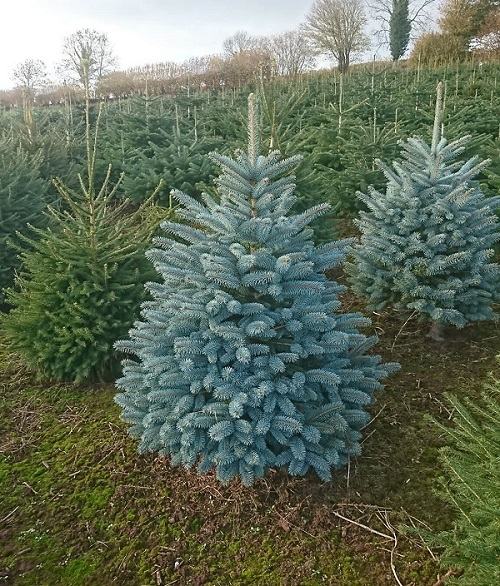
Black spruce
Black Spruce has shorter and softer needles than Blue Spruce.
It has a dark color and a traditional Christmas tree look. The branches are strong, and Christmas decorations hold very well.
The scent of Black Spruce is similar to fir or pine, but the scent is softer and sweeter.
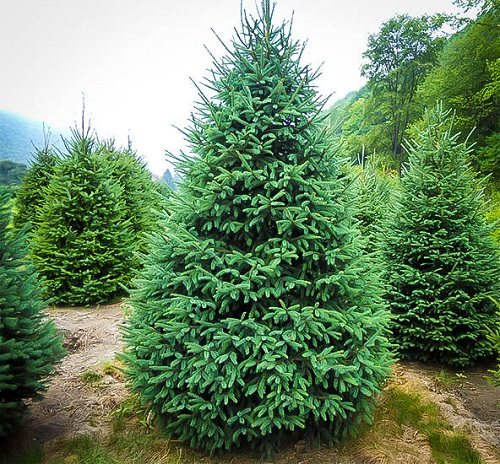
Dead Spruce
Spruce Dead is a classic conical shape with short, lush branches.
The tree has a warm, deep forest green color and is usually complete in the lower part, with no gaps in the trunk.
The tree has a beautiful pine scent that will fill any room with a festive mood. The needles are fresh, fragrant, and slightly pointed – making them less prickly than other types of spruce.
However, the disadvantage of this spruce is that it can lose needles relatively quickly after being brought indoors.
To slow down the needle drop, keep the tree away from the heating and water it daily.
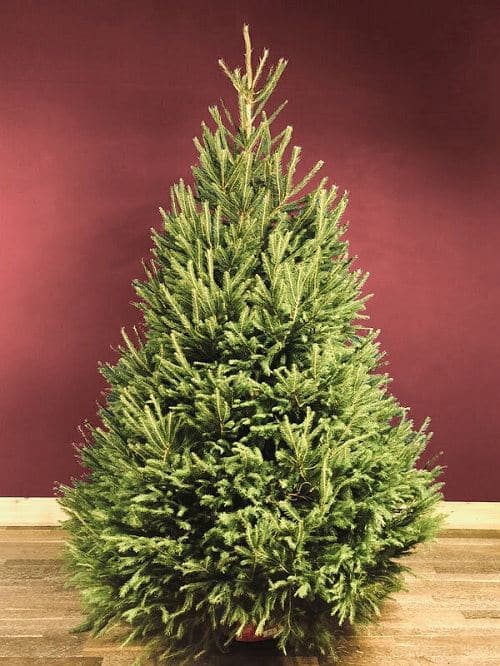
| Tree name | The appearance of needles | The power of the branches | Scent | Height |
| Blue spruce | pointed, very sharp | solid branches | distinct citrus-woody aroma | up to 95 feet |
| Black spruce | dark, softer than other conifers, prickly | solid branches | reminiscent of the scent of pine or fir | up to 80 feet |
| Dead Spruce | slightly pointed, slightly prickly | solid branches | pine scent | up to 130 feet |
Are you still hesitating whether to buy a live tree? Get inspired where to buy a potted Christmas tree and how to care for it!
How to choose the best Christmas tree for your home
Here are two great tips to help you know you’ve invested in the best tree for your home.
Be aware of the parameters of your home
If you want to get the right indoor Christmas tree, you need to ensure a gap of about fifteen centimeters between the top of the tree and the ceiling. If the tree were too tall, its tip would begin to twist under the weight of the ceiling.
Always remember that the stand’s height must be added to the tree’s height.
Consider the shape of the tree.
Look at the tree from all possible angles when buying. Move away at least a few meters away to get a good view and see it in space.
Make sure the branches are symmetrical and that no branch is sticking out anywhere you don’t want it to.
Also, make sure the tree trunk is as straight as possible.
Get inspired by tips for making your own Christmas decorations!
Types of spruce
There are about 35 species of spruce. These are coniferous evergreen trees that are found in northern temperate regions.
These are large trees that are usually 60-200 feet tall. Their branches are broom-like, and the trees are conical in shape.
Spruces differ from pines in that their needles are shorter and less sharp, and their cones hang down.
Spruce roots tend to grow in space, in width, not deep into the ground, as with pines, for example, so they can more easily be uprooted by a strong gust of wind.
| A kind of spruce | The appearance of a tree | Maximal height | A type of needle | Type of cones | Place of origin |
| Blue Spruce (Silver/Prickly) | 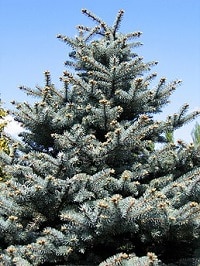 | 90 feet | Needles are 1.8–3 cm long, stiff and strong, curved and protruding in all directions | Cones are soft, cylindrical and elongated | North America |
| Spruce dead | 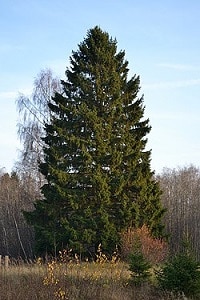 | 150 feet | Needles are 1–2.5 cm long and 1 mm wide, pointed at the end | The cones are elongated and overhanging | central and south-eastern Europe |
| Eastern Spruce | 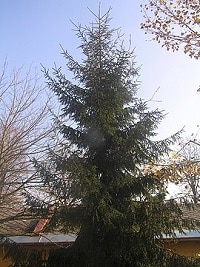 | 120 feet, exceptionally 180 feet | The needles are 0.5–1 cm long, densely crowded | Pine cones have a cylindrical shape | central Europe, originally from the Caucasus and the northeastern part of Turkey near the Black Sea |
| Spruce strainer | 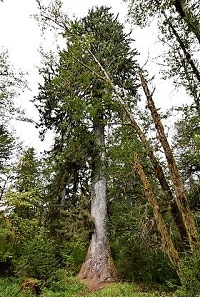 | 240 feet | Cones are drooping and cylindrical; they are slender | Central Europe, originally from the Caucasus and the northeastern part of Turkey near the Black Sea | The needles are square, and their length is 1.2-3 cm |
| Engelmann spruce | 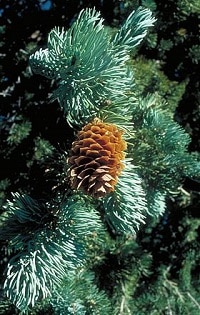 | 140 feet, rarely 180 feet | The needles are strong, sharp, and 1.5-2.5 cm long | The cones are 3–7 cm long and are widest at their center | North America |
| Black spruce | 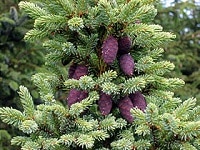 | 80 feet | The needles are square and short, growing to a length of 0.6–1.5 cm | Cones are small and 1.5–2.5 cm long | North America |
| Brewer’s Spruce | 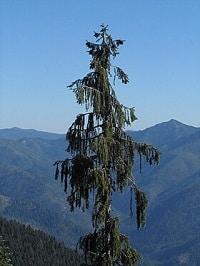 | 120 feet | The needles are flattened and 1.5–3 cm long | The cones are fan-shaped and 6.5–12 cm in size | North America |
| Spruce oak tree | 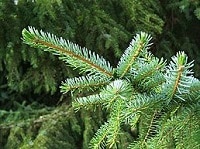 | 70 feet | The needles are 1–2 cm long | Cones are 4–7 cm long | West Coast of North America |
| Red spruce | 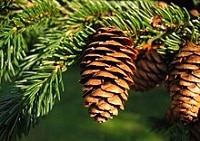 | Western Serbia, eastern Bosnia | The needles are square and 0.8–2.3 cm long | The cones are small and grow to a length of 2.3-4.5 cm | North America |
Have you decided you want a live tree but don’t want to cut it down? Then, find out how to choose the right Christmas tree in a pot!
How to care for spruce in a pot indoors
Spruce trees are popular trees for growing indoors. They look beautiful and are easy to care for.
You can grow many types of spruce indoors. Below we have prepared a list of the most popular species that thrive indoors.
The most common indoor spruce species include:
- Japanese spruce bonsai
- Dwarf Spruce (Alberta)
- Black spruce
- Brewer’s spruce
- Caucasian spruce
- Colorado Blue Spruce
- Engelmann spruce
- Red spruce
- Spruce strainer
- Serbian spruce
- Siberian spruce
Planting a spruce in a flowerpot
The best potting mix for indoor spruce is garden soil and organic compost mixed in a 1:1 ratio. The mixture is suitable for growing spruce in a flowerpot.
Follow the steps below to place a bet.
- Add a layer of gravel, pebbles, or stones to the bottom of the pot for better drainage.
- Pour a few handfuls of potting soil into the pot, just enough to cover the drainage holes.
- Place the tree with the root ball directly on the bottom of the flower pot and spread its roots as much as possible.
- Slowly add soil around the edges of the pot, pressing it lightly over the roots.
- Continue filling the pot with soil until 10 inches from the top container.
- Add 2 to 3 inches of mulch or compost to the top of the soil.
- Water the tree base until water flows out of the drainage holes in the bottom of the pot.
Watering and fertilizing indoor spruce
The tree must be thoroughly soaked once a week and watered a little daily. Caring for a tree is very similar to watering a bonsai.
Fertilization is not so necessary and does not need to be done very often. If you use granules (this slow-release food is excellent), you can fertilize once a year in the spring or summer.
Liquid nutrients can be applied once every few weeks, along with water.
How to replace natural conditions
Spruce trees grown indoors adapt to and like temperatures between 70 – 80°F when brought indoors.
Indoors, placing spruces near a window where they have 8 to 10 hours of indirect light is best.
How long is it possible to leave the spruce inside
Most spruces can and do survive indoors permanently (provided their light, water, air flow, and fertilization requirements are met).
See how you can grow a blue spruce.
Discover similar tips
How to care for spruce outdoors
The best time to transplant potted spruce outdoors is early spring before the new buds appear. That way, it will still have plenty of time to recover, root, and produce new growth before winter arrives.
Spruce trees need slightly acidic soil otherwise they may not thrive as well. They also need moisture, really huge amounts of water, because they tend to dry out quickly.
Most spruce roots are not located lower than 30 cm below the surface of the ground, therefore the trees cannot take too many soil nutrients, which are mainly found in lower places.
When planting, also make sure that there are no other plants around the spruce because the roots of the spruce greedily suck up all possible moisture before other plants can use it. Your lawn may die or the flowers in the bed next to you begin to wither.
However, acid-loving plants thrive around spruce trees, which include acid-loving shrubs and perennials, such as rhododendrons, blueberries, bergenia, lungworts, lilies, junipers, and other conifers.
How to care for a Christmas spruce in a stand
If you have decided to have spruce at home temporarily, just for Christmas, place it in a stand with water and ensure the water does not disappear.
If you provide the tree with enough moisture and do not have it near a radiator, there is a good chance that the needles will not fall from the branches too quickly.
Before placing the saplings you buy in the stand, cut off the lower part of the trunk by about 2 inches. This is because the stump starts to dry out when the tree is cut on the farm. The resin can eventually clog the pores that absorb water.
Advantages and disadvantages of spruce in the interior
| Pros | Cons |
| uniform shape | the needles are very pointed and the sting can be painful |
| strong branches that will hold even heavier ornaments | may cause allergy |
| strong branches that will hold even heavier ornaments beautiful, distinct fragrance | at higher temperatures, the needles fall off quickly |
| it can last up to 6 weeks or more in water | the distinct smell of some species may bother more sensitive people |
Advantages and disadvantages of spruce in the exterior
| Pros | after Christmas, you can plant it in the garden |
| plenty of shade | little resistant to rot |
| a home for animals | low resistance to weathering |
| absorbs carbon dioxide from the air, helping to reduce greenhouse gas emissions | it attracts pests and is easily damaged by them |
| after Christmas you can plant it in the garden | excessively absorbs subsurface water |
Spruce is more suitable for colder places. So why not use it to make Christmas decorations in a box, which you can use to decorate your windows?
If you are considering buying a spruce as a Christmas tree, it can be said that more durable options are also available.
Spruce trees are beautiful, but their needles do not have much hope of long-term durability in the heat and dryness. However, in the case of frequent watering, it can last you for some time.
The advantage of the spruce is that if you leave it in a pot for Christmas, you can plant it in the garden, making you happy for a long time.


 Milan & Ondra
Milan & Ondra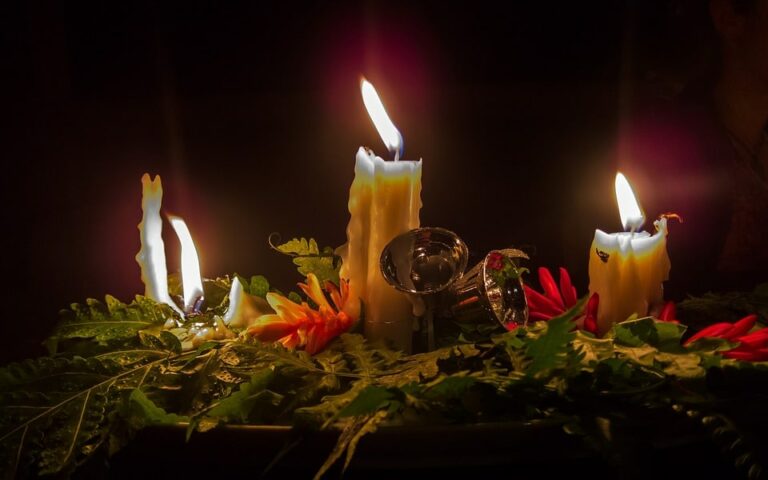

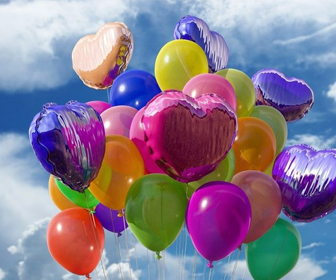
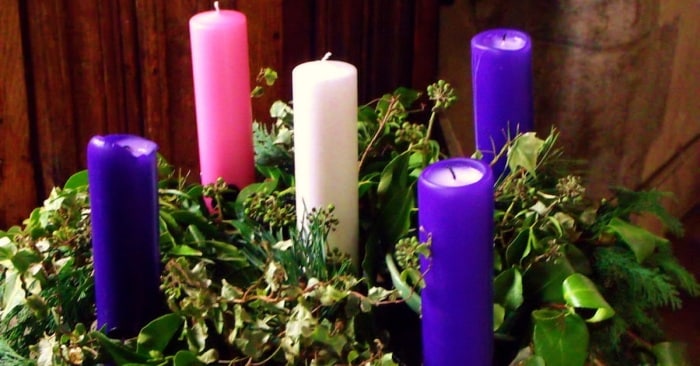
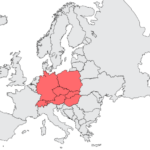 Central Europe
Central Europe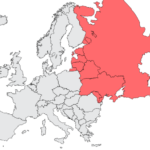 Eastern Europe
Eastern Europe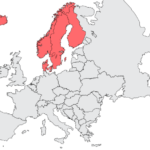 Northern Europe
Northern Europe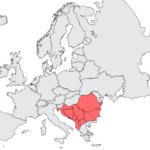 Southeast Europe
Southeast Europe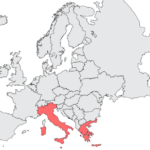 Southern Europe
Southern Europe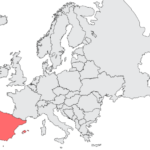 Southwestern Europe
Southwestern Europe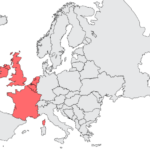 Western Europe
Western Europe